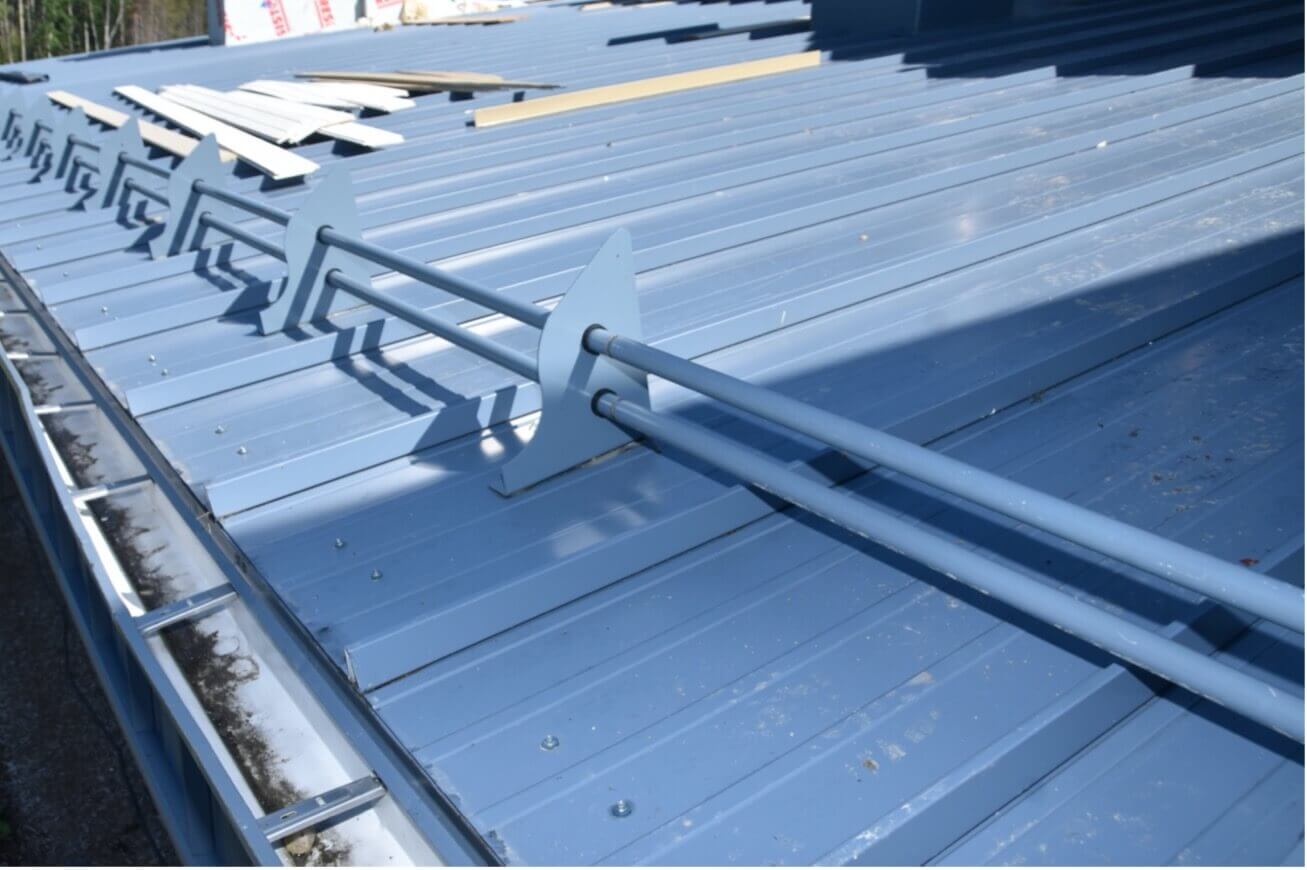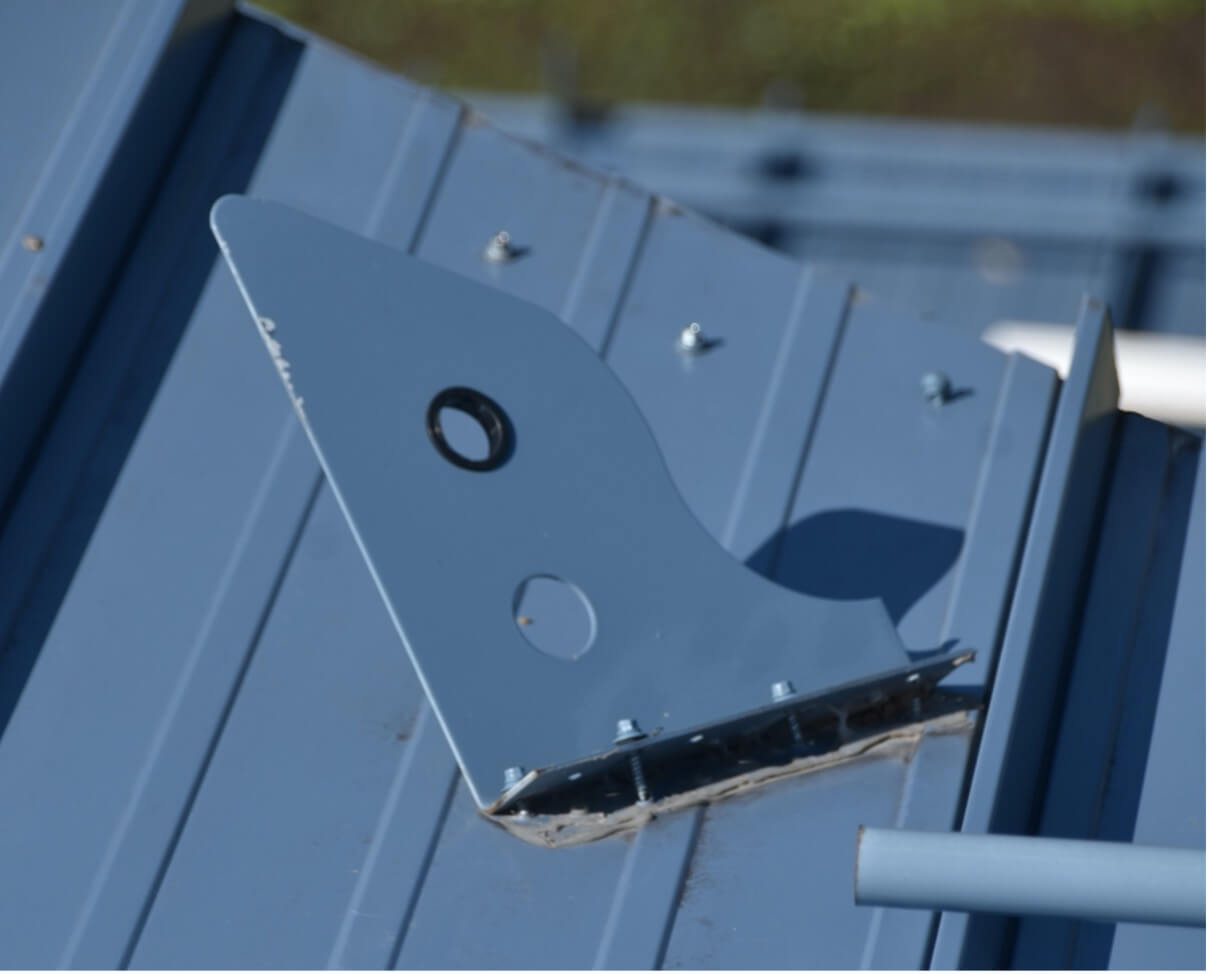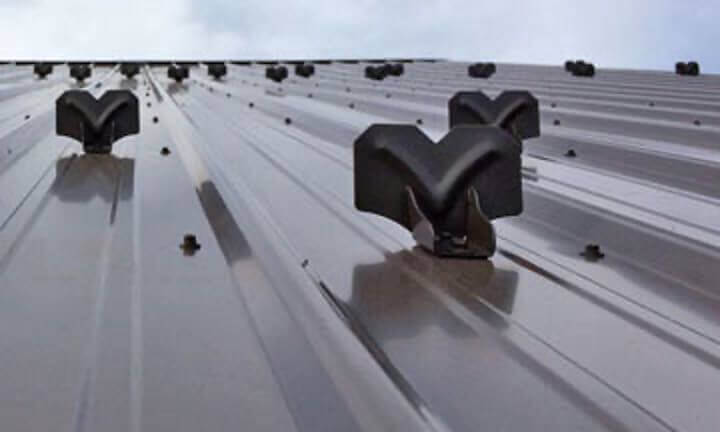By Robert Massarelli, M.Eng., P.Eng.
Managing snow on roofs during a typical Canadian winter can pose several unique challenges. Between snow drifting from nearby surfaces, uneven accumulations, and issues around freeze and thaw cycles, understanding how snow accumulation behaves on a roof is crucial. Especially when it becomes a question of the safety for building occupants and passers-by.
We’ve all seen them. Near to where individuals congregate outside a main entrance. Along pedestrian thoroughfares which bring you close to a building. Typically bright, identifiable signs that read: “WARNING: Watch for falling snow!”
Enter snow retention systems.
Snow retention systems are, as their name implies, intended to secure an accumulation of snow on a roof. Their goal is simple: hold the snow in place to prevent it from cascading off the roof in an avalanche-style manner. Instead, the snow is permitted to gradually melt and sublimate away. What building owners may not know, however, is that the proper performance of snow retention systems is contingent on many factors. In short, snow retention systems are engineered systems which need to be customized for each installation in which they will be used.
 Snow retention systems come in two forms: snow guards and snow fences. Snow guards are individual units that are fastened to a roof using either adhesives or mechanical fasteners (photo). They are frequently placed in multiple rows and, as the need dictates, can be installed over a significant percentage of the roof. They perform by providing additional friction within an accumulation of snow, maintaining it in place, or allowing it to cascade off the roof in a controlled fashion.
Snow retention systems come in two forms: snow guards and snow fences. Snow guards are individual units that are fastened to a roof using either adhesives or mechanical fasteners (photo). They are frequently placed in multiple rows and, as the need dictates, can be installed over a significant percentage of the roof. They perform by providing additional friction within an accumulation of snow, maintaining it in place, or allowing it to cascade off the roof in a controlled fashion.
 Snow fences consist of regularly spaced brackets to which metal tubes (or bars) are secured, with the bars generally oriented in a direction perpendicular to the direction of sliding snow (photo). They can be installed in single or multiple rows, depending on the need. In contrast to snow guards, the brackets are generally only secured mechanically using fasteners installed through the roof and into the structure, or using brackets that clamp onto the vertical seams of metal roofing panels.
Snow fences consist of regularly spaced brackets to which metal tubes (or bars) are secured, with the bars generally oriented in a direction perpendicular to the direction of sliding snow (photo). They can be installed in single or multiple rows, depending on the need. In contrast to snow guards, the brackets are generally only secured mechanically using fasteners installed through the roof and into the structure, or using brackets that clamp onto the vertical seams of metal roofing panels.
How a snow retention system is fastened to the roof is an important consideration, as the resistance of the system is largely dictated by the resistance of the fasteners. Adhesive materials may work well, but their application can be inconsistent and prone to construction errors. Mechanical fasteners, such as screws, physically penetrate the roofing materials and may provide a convenient path for water to enter the roof system. To limit this concern, many manufacturers specify that screws with neoprene (synthetic rubber) gaskets be used in their installations alongside various forms of sealants. Another type of mechanical fastener, clamps, can be used with metal standing seam roofs. These fasteners “pinch” the seam with round-point screws. Regardless of the retention system chosen, it is important they be installed according to the manufacturer’s instructions. They are not generic, and each needs to be chosen based on the snow load the system will be subject to during its use.
The variables used to determine the snow load on a retention system are (for a standard gable roof): the code-specified snow load, the roof slope, and the length of the roof from the eave to the peak (measured horizontally). For snow fences, the length of the roof parallel to the eave is also required. The load values obtained with this information can then be compared to data available from manufacturers, obtained through testing, to determine the necessary quantity and spacing of retention elements. If a manufacturer does not have test data available for their system, it would probably be a wise decision to choose one from another manufacturer. Thankfully, many manufacturers have literature and online calculators available to assist with the selection process.

https://www.snoshield.com/snow-guards-metal-roof/
The final considerations are placement and installation. Per good practice, snow retention systems are best placed at the lower half of a roof. This is because as snow is drawn down the roof slope by gravity, the snowpack becomes denser (heavier) the closer you approach the edge. Ultimately, the final installation is to be completed based on the manufacturer’s instructions and engineering details. One that is not has a greater chance of failure. For example, if the fasteners used to keep the systems in place were not numerous enough, or improperly anchored to the structure, brackets can pull free at their supports (photo). This can quickly overload nearby elements, resulting in a split-second domino effect of failures.
Failure of a snow retention system can send a cascade of hard packed snow plummeting from a roof. This represents not only a risk of property damage, but can also be an important safety concern. Failure of the system does not necessarily mean it was improperly designed or installed, but these are key factors to have evaluated. Hopefully, with the information provided in this paper, failures such as these can be avoided.
